Affiliate disclosure: This post may contain affiliate links. Please see our Privacy Policy.
Home winemaking is both fun and tasty, but the bottles can add up quickly. A single 5-gallon bath produces around 20 bottles of wine, and when I started making homemade wine I wanted to ferment everything I could get my hands on. After a few years, I had more than 200 bottles of wine in my basement.
Even with a full basement, I was still excited about brewing, but I simply can’t drink as much as I’d like to make. Brewing a small batch allows you to experiment with new flavors without spending a fortune on ingredients or turning your liver into pulp.
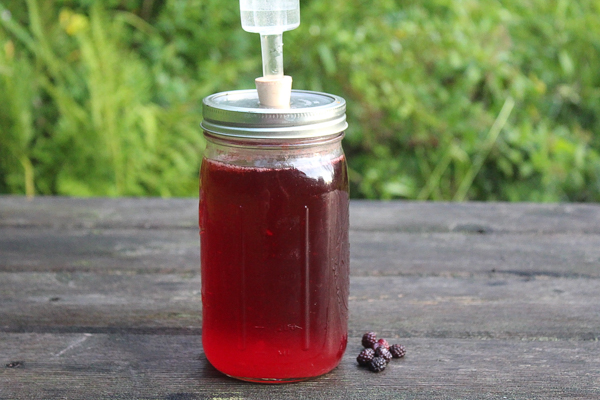
While we often think of wine coming from grapes, fruit and flower wines can be just as satisfying. Fruit wines are often difficult to find in the store, and floral wines are downright impossible. If you want to try one, you’ll have to make it yourself, and it makes sense to experiment with a small batch rather than committing to a huge amount of experimental wine.
When I say “small batch” I mean anywhere from a super tiny 1-pint tester batch, up to a four wine bottle one-gallon batch. The very tiny micro batches allow you to experiment with expensive or hard to gather ingredients. Sometimes you just can’t forage enough blossoms for a full gallon, or you’d rather not spend the time hand plucking petals from quart after quart of dandelions for a full gallon of dandelion wine.
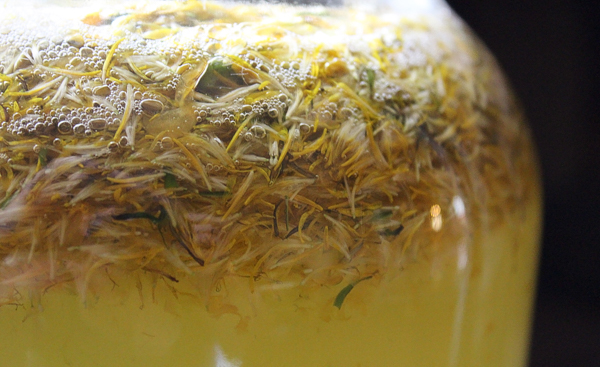
Small Batch Wine Equipment
Winemaking generally requires a few basic pieces of equipment. A fermentation vessel holds the brew while it’s fermenting, and it’s capped with a water lock. The water lock allows the CO2 produced by the yeast to escape but prevents contamination from getting in and spoiling the wine. Think of it as a one-way valve that helps prevent pressure build up.
Next, a siphon is used to move the wine from one container to another and to bottle the wine. Wine isn’t just poured out because then all the sediment at the bottom of a brew would come too. A siphon allows you to move the brew out and leave the sediment behind.
Equipment for small batches used to be hard to come by. In years past I’ve seen friends hack together a small fermenter using a plastic soda bottle with a balloon attached to the top for a water lock. With the increasing interest in home fermenting, there are now super tiny batch mason jar fermenters available. They’re generally marketed at people who make their own sauerkraut or fermented pickles, but there’s no reason you can’t make wine in a mason jar.
There are a lot of choices for mason jar fermenters, and just about all of them work well. Often they’re a mason jar lid with a small rubber stopper and a traditional brewing water lock added. They’ll sometimes come with a wooden muddler and glass fermentation weights, which are great for fermenting vegetables but unnecessary for winemaking.
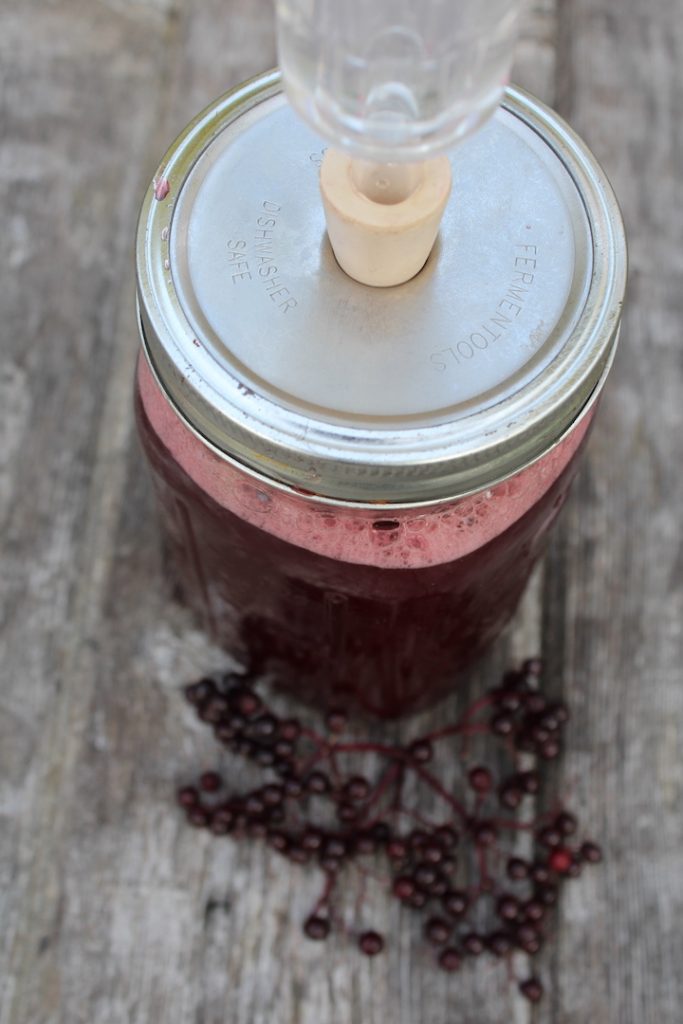
There’s now a new type of water lock that’s made out of silicone and doesn’t require water. These waterless water locks are much easier to clean, and much more convenient than those usually used for brewing. It doesn’t have the same “brewing” aesthetic, but if can get past the looks, they’re inexpensive and much more sanitary.
Wide mouth mason jars generally come in pint, quart and half gallon sizes. For full gallon batches, you can use traditional demijohns with a rubber stopper and airlock. The narrow neck can be tricky to clean, and I’ve mostly switched to using a specialized wide mouth one-gallon jar fermenter. It’s much more convenient for brews with a lot of particulate matter, like a floral wine. The largemouth fermenter also allows you to process the fruit and brew in the same container like I did for this rhubarb wine.
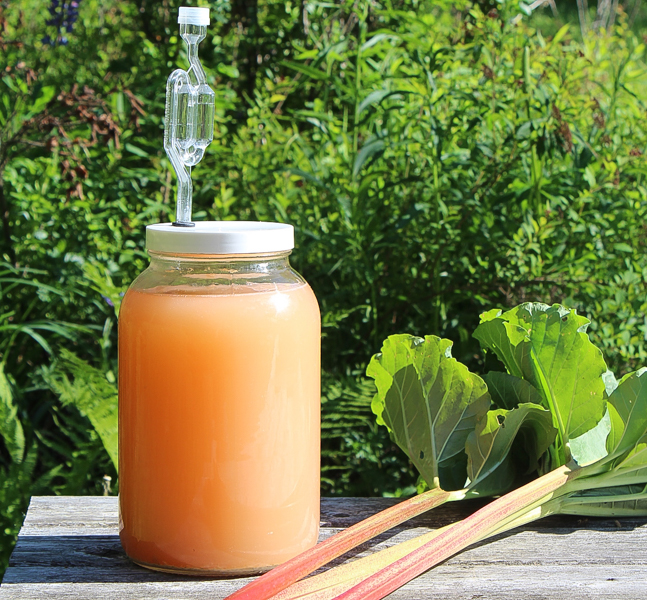
That covers fermentation vessels and water locks, now we still need a small batch siphon and bottling equipment.
For half-gallon and one-gallon batches, I use an auto siphon. Just a pump of two and the siphon action begins in seconds and your wine can be moved effortlessly into a clean container. For quart and pint batches, I break the rules. Since the jar is so small, it’s actually easier and cleaner to just pour very carefully into a clean jar, stopping before the last bits and leaving the sediment behind.
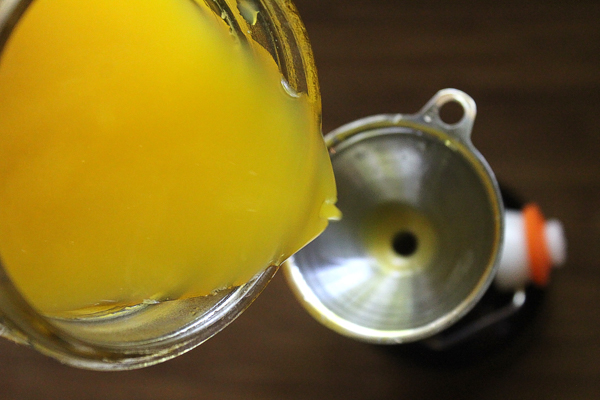
Big batch wines generally go into wine bottles with corks. With small-batch wines, there’s often not quite enough to bother with wine bottles and corks. I’ll use wine corks and a bottle corker for half-gallon and one-gallon batches, which make 2 and 4 bottles respectively. For quart and pint batches, it’s easy enough to just pour the wine into flip-top Grolsch bottles and skip the corks altogether. The Grolsch bottles can be reused and it’s less equipment to deal with.
Small Batch Wine Ingredients
Ingredients are simple right, just fruit and yeast? Well, not quite. It’s important to have the right balance of sugar, acid and tannin in any given wine. That’ll ensure good flavor, but also help the yeast work in optimum conditions.
Most fruit wines require roughly 2-3 pounds of fruit and 2 pounds of sugar. A good example is this peach wine, which calls for exactly that ratio. Floral wines don’t have fruit sugars, so they’ll require more added sugar to ferment properly. They’re generally around 2.5 to 3 pounds of sugar per gallon.
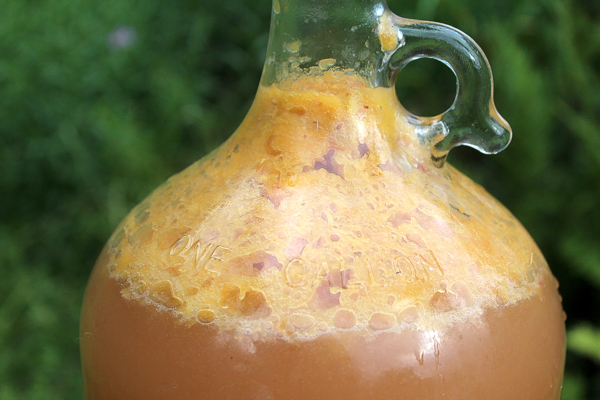
For smaller batches, all you need to do is reduce the sugar accordingly. For example, a quart is 1/4 of a gallon, so it would require 1/2 to 3/4 of a pound of sugar. There are roughly 2 cups of granulated sugar in each pound, so that would be 1 cup to 1.5 cups of sugar per quart batch of wine.
Beyond sugar and fruit, there’s acid, tannin and yeast nutrients. There are also a number of winemaking chemicals used to end the fermentation and create a still wine, assuming you don’t want any residual carbonation.
- Pectic Enzyme is used for breaking open fruit cells. It’s commonly used with fruits that don’t juice easily, and that you’d find sold in the store as a “nectar” rather than a juice. Mango wine is a good example of a wine that would use pectic enzyme.
- An acid blend to decrease the overall pH, which helps with flavor and keeps the yeast healthy.
- Yeast Nutrient to feed the yeast, and is helpful when working with fruits other than grapes which might not have all the right micronutrients. A few raisins added to the wine can also work as a yeast nutrient instead of the powdered additive.
- Tannin to give the sweet wine a bit of astringency and balance the flavor. Brewed black tea, currant leaves and grape leaves can also be used as a tannin source.
- Potassium Sorbate and Camden tablets (potassium metabisulfite) to completely end the fermentation and stabilize the wine before bottling.
The amount of any of these ingredients will vary based on the type of fruit used, as well as the batch size.
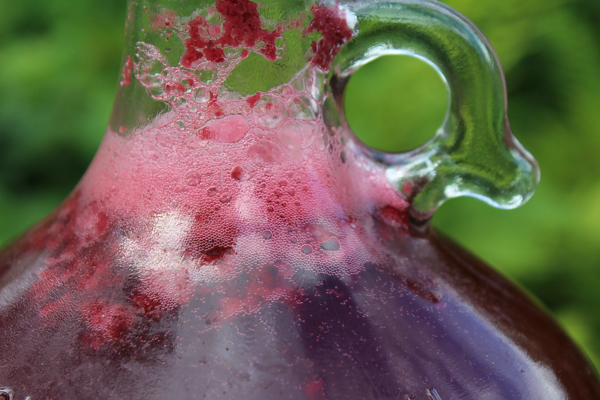
How to Make Small Batch Wine
Once you have the ingredients and equipment, the process is pretty similar to making wine of any batch size. Start by combining the fruit and sugar. If it’s whole fruit chunks, give the sugar a bit of time to extract juice from the fruit. If you’re starting with juice, mix the sugar with the juice until it’s dissolved and then add the acid source, tannin source and yeast nutrient.
Dissolve the yeast in a bit of water and allow it to bloom for at least 5 minutes. Adding dehydrated yeast directly into a sugary wine can shock the yeast before it’s had time to “wake up.”
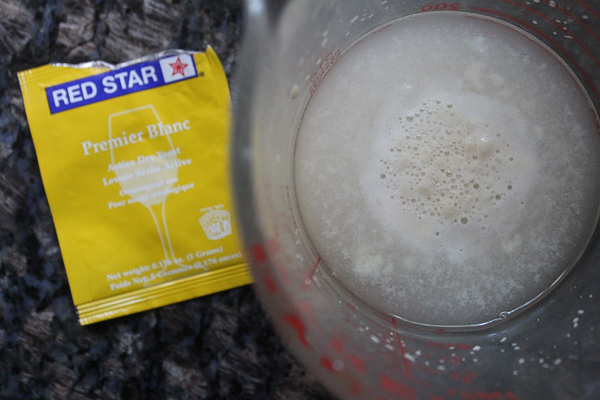
There are a number of different wine yeasts, and each one will give the brew a different character. I tend to use Premier Blanc, formerly called “champagne yeast” because it rarely fails to ferment and it’s the most dependable. It tends to produce a rather high alcohol content, with a neutral character.
Other types of yeast will compliment different fruits, and it can get a bit complicated. If you’re just starting out, try Premier Blanc or use what’s suggested in the recipe.
Fermentation happens in several phases, the first is called “primary” and it’s where the fast and sometimes violent fermentation takes place. After the primary, the wine is usually siphoned off into a clean fermentation vessel. This leaves behind the sediment and will result in a clearer wine. This step is optional, but the finished wine will be higher quality. It usually takes 2-3 weeks for the primary fermentation to complete.
Secondary fermentation is usually slower and can take 2-3 weeks or 2-3 months. It’ll depend on the ingredients used and the ambient temperature. Once fermentation has stopped, and there are no visible bubbles for several minutes, the wine is ready for bottling. Leaving it in secondary longer is safer, and will prevent too much fermentation happening in the bottle. That can result in over carbonation unless you’re using a winemaking additive to stop fermentation.
Bottling and Aging Homemade Wine
After the secondary, rack the wine again and bottle using either Grolsch flip top bottles or corked wine bottles. If you’re going to keep the wine for more than a few months, use corked wine bottles. At this stage, you’ll need to decide if you want to use additives to stop fermentation to have a completely still wine. If you’ve allowed secondary to go on long enough, the fermentation will be complete and additives won’t be necessary.
Adding additional sugar, known as back sweetening, is also an option at bottling time. If you haven’t stopped fermentation, additional sugar may result in over carbonation, so be careful. Follow the recipe closely at this point, and don’t add to much sugar at bottling.
Homemade wines should bottle condition for at least 2 weeks, preferably much longer. Floral wines tend to need more time to mellow before you can taste their delicate flavor, and may need a year to taste their best. More robust fruit wines are quicker.
Making Medicinal Wines
Medicinal wines used to be a staple of home herbal practices. While these days most people preserve herbs in herbal tinctures, making a herbal wine or ale was simpler before cheap high-quality spirits became available. The “alewife” was a herbalist, who brewed her medicines into a tasty alcoholic concoction that got even the stubborn to take their medicine.
The Herbal Academy, an online herbal school, has a course called The Craft of Herbal Fermentation that takes you through the ins and outs of making medicinal beer, wine and mead. Though I’d already been making wines for years, I took the course a few years ago to learn about incorporating more herbs into my brewing.
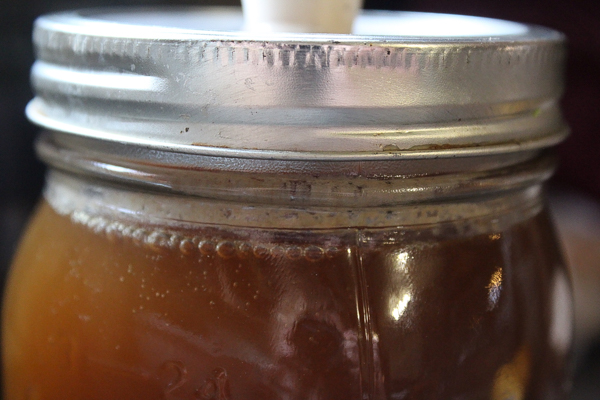
I’ve since made a medicinal birch wine, with the sap harvested from our own birch trees. My daughter also loved helping me harvest a gallon of coltsfoot flowers this spring for a medicinal coltsfoot floral wine. Every year we make a batch of elderberry mead, which is a medicinal honey wine that helps to stave off winter colds.
My next medicinal brew is made with the sap of wild lettuce, and it’s a well-known pain reliever. I’ve had great success using wild lettuce sap for low back pain and I’m excited to see how it works in a ferment.
Honey Wines (Mead)
Honey wines, also known as mead, have more complexity than simple sugar or juice based wines. They also tend to have a warmer, richer mouthfeel and more body. Honey isn’t quite as easily fermented as fructose from fruit juices or sucrose from cane sugar, so they’ll generally do better with a bit of yeast nutrient added. A few raisins also add the necessary nutrients and help keep meads from stalling out before they’ve finished fermenting. Here’s a primer specifically on making small batch mead.
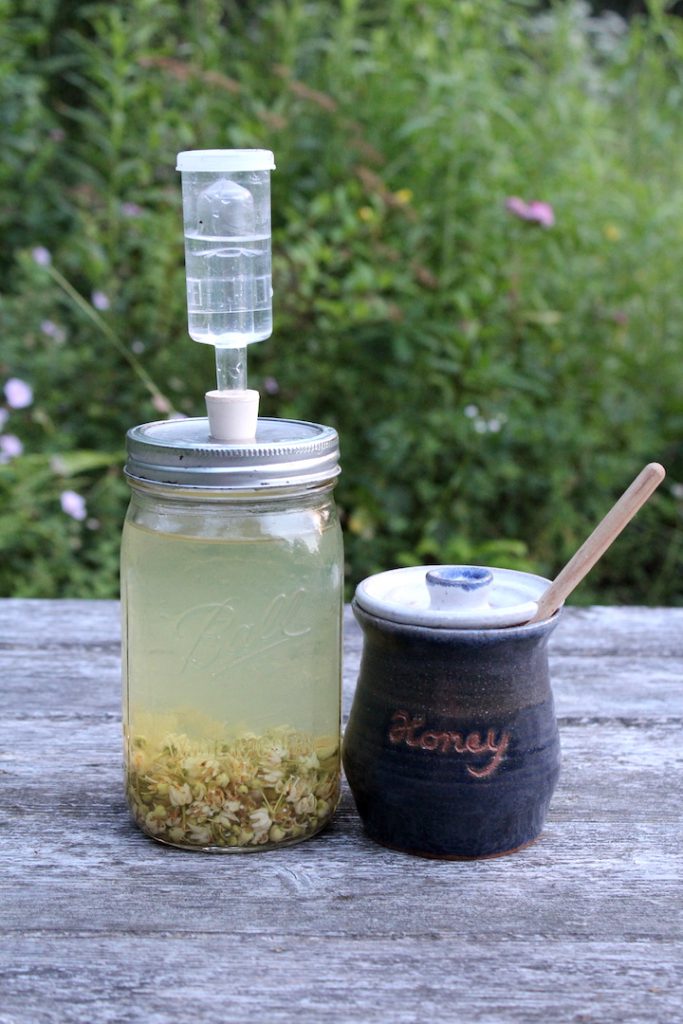
Small Batch Wine Recipes
I’ve been brewing now for more than a decade, but I’ve only switched over to small batches in the past 2 years. I wish I would have started there, it would have saved me a lot of money on ingredients. When you have to pour out 20 bottles of an experimental wine that turns out to be undrinkable, you’ll wish you had experimented with a small batch.
Here are a few small batch recipes for wines and meads I’ve developed in the past few years.
Fruit Wine Recipes
Honey Wine Recipes (Mead)
Herbal and Medicinal Wine Recipes
Any recipe can be converted to a small batch by dividing the ingredient quantities appropriately. Divide the ingredients in a 5-gallon batch by 5 for a 1 gallon, or by 20 for a 1-quart batch.
Need another reason to give it a try? Here’s a list of 10 reasons to make small batch mead, and all of them apply to any type of wine or homebrew.
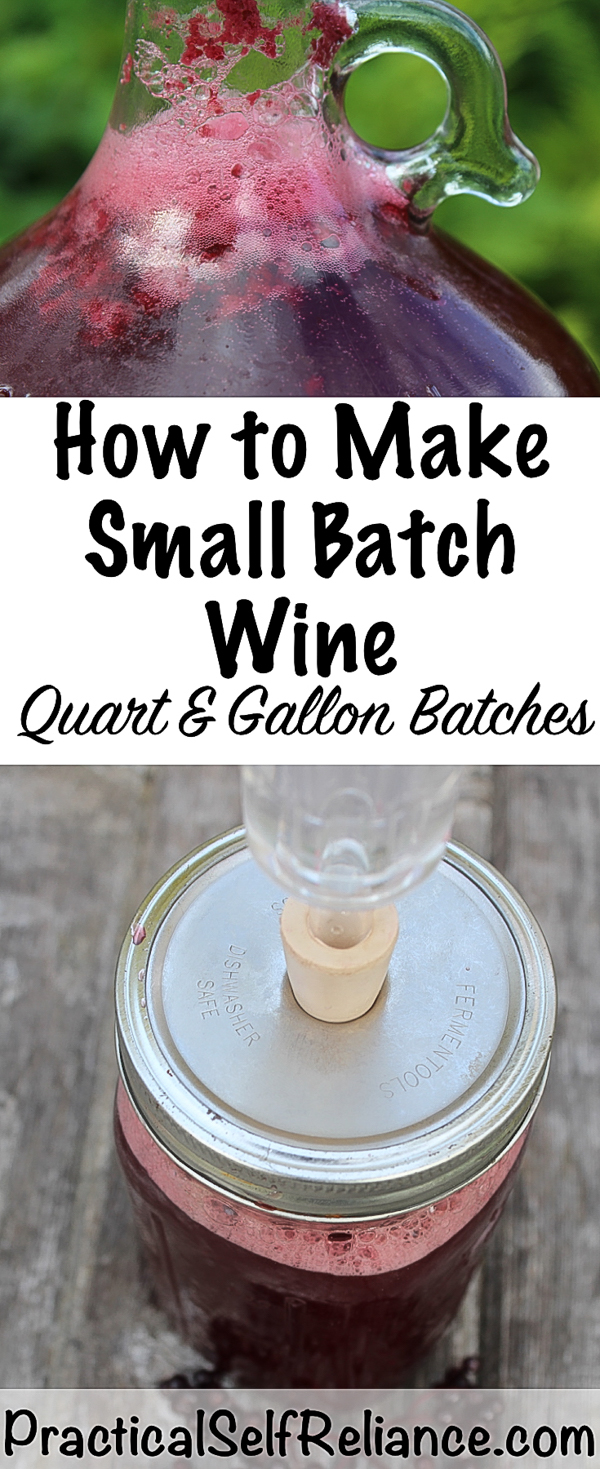


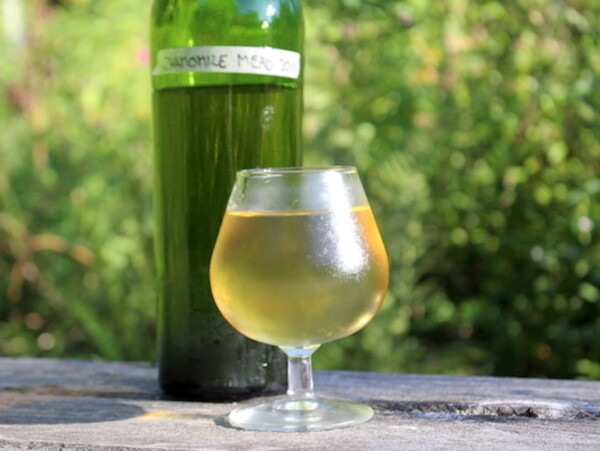
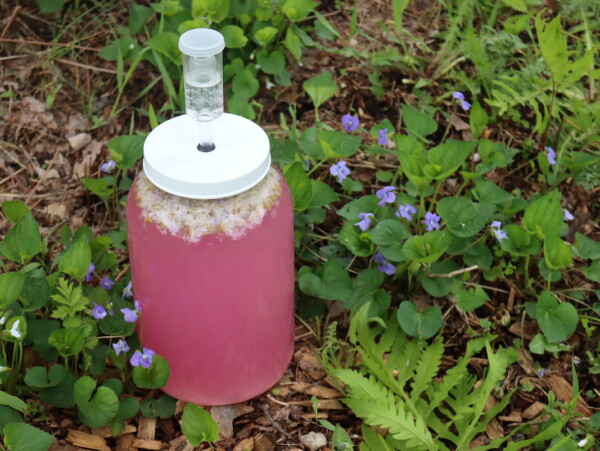
Hello,
Thank you so much for all the information and recipes! I am so excited to make some mead! I bought some wine yeast before I read this post and I am not sure it is the right one for mead. It is Red Star Premier Rouge??? is that ok? or do I need to get the Premier Blance?
Premier Rouge works just fine for meads. Here’s a guide on all the types of yeast and how to choose: https://practicalselfreliance.com/wine-yeast/
Hope this helps!
Hi! I would love to make my own wine especially strawberry wine I used to have years ago. However I’m now diabetic can I substitute the sugar for a powdered sweetener?
The yeast that make the wine need a nutritive sweetener to work. In the end, very little of the sugar is left in the wine as it’s converted to alcohol. If you want a dryer wine with less sugar in the end, use a yeast type with a higher alcohol tolerance. You cannot use sugar substitutes to make wine, as you’re feeding yeast and the others simply wont work. Here’s a bit more on yeast strains: https://practicalselfreliance.com/wine-yeast/
Thanks for all the excellent info. We have a couple of plum trees and suddenly this year we were drowning in buckets of delicious golf ball sized plums. It took us by surprise and we ate plums, made a lot of jam and even ice cream! Next year I want to make wine and be prepared to do so. I have a large selection of beer brewing equipment including carboys, air locks, siphons bottles and caps. What can you tell me?
There are several wine recipes linked in this post, including plum. https://practicalselfreliance.com/winemaking-recipes/
Thanks for simplifying this process. I’ve made a few batches of wine with Welches grape juice and a balloon for the air lock. Turned out ok. But I love the idea of making Wine by the Quart with fresh fruit. I just bought some mason jar lids with ‘real’ airlocks and and am ready to take my next step in winemaking
That’s great. Let us know if we can help in any way.
Nice article!
I just started a small batch with blue berries. Im using the mason jar waterlock fermenting lids. This is day too and all the fruit is on the top and bubbling, the waterlock thing is also filled with juice. Have i ruined it already?
When making blueberry wine, it’s often a good idea to remove the fruit and just use the juice if you’re putting it straight into a fermenting vessel with a waterlock to avoid clogging the water lock. How is your wine doing now?
I didn’t know small batched were an option. Thanks for this information. You’ve given me one more thing for my to-do list (thank you??!!). 🙂
You’re very welcome.
can you make apple wine
You sure can! Here is a post for that https://practicalselfreliance.com/apple-wine/
I’m trying this for the first time! Thanks in advance for the guidance! I’m using fresh pomegranates so I’ve had to do some estimations (I got about 2c seeds). I’m now at about 2c of juice (including the volume from adding sugar). I’m sure the proportion of yeast to juice is important, but I’m not sure about adding more water at the end to fill up my vessels. I have several 1-pint (2 cup) vessels, so my batch won’t fit, it’s just a little too much and will overflow. I’m thinking of using two 1-pint vessels, and then just filling with water to be within about 1″ of the top of the vessel. Does that sound ok? I’m worried that if I top off with water (like the small batch peach recipe suggests) I might dilute the flavor too much. Or that if I leave too much head space it’ll spoil. Thoughts on what to do if your batch size is a little too much (or too little) volume for your fermentation vessel?
It really depends on how much water you’re adding. If there is still plenty of flavor after adding the water then you should be ok.
Have you ever tried fermenting concord grapes?
We actually grow at least 12 varieties of grapes that are used for wine. That process is a little more complicated than what can be shared in a simple blog post which is why you don’t see any grape wine recipes on the blog.
This is exactly what I was looking for; thank you for sharing your expertise!
You’re very welcome.
Sorry if this is stupid, but what recipe should I follow or what should I do, if I just want to make grape wine?
It’s not a stupid question at all. There aren’t any grape wine recipes on the blog because grape wine is much more complicated than what can be contained in a blog post. This is mainly because there are so many variables in grapes that affect every aspect of the winemaking process.
I sure would love to know your recipe for wild lettuce! I have used a tincture for years but I’m intrigued with this since the tincture has such a fierce taste!
This post briefly describes the process but there isn’t an exact recipe. https://practicalselfreliance.com/wild-lettuce-pain-relief/
Hi there!!
First off, thank you for all this information. I’ve read a ton of your posts and feel confident to start my first batch. I’ve been doing a lot of reading from other sites too, where a hydrometer is recommended in some recipes/steps, but I don’t see it mentioned in yours. Do you use one? Is this a tool needed for the small batch wine recipes you’ve shared on your site?
Thanks so much!
Randy.
You can certainly use one if you wish, but it’s not necessary for any of the recipes on this site.